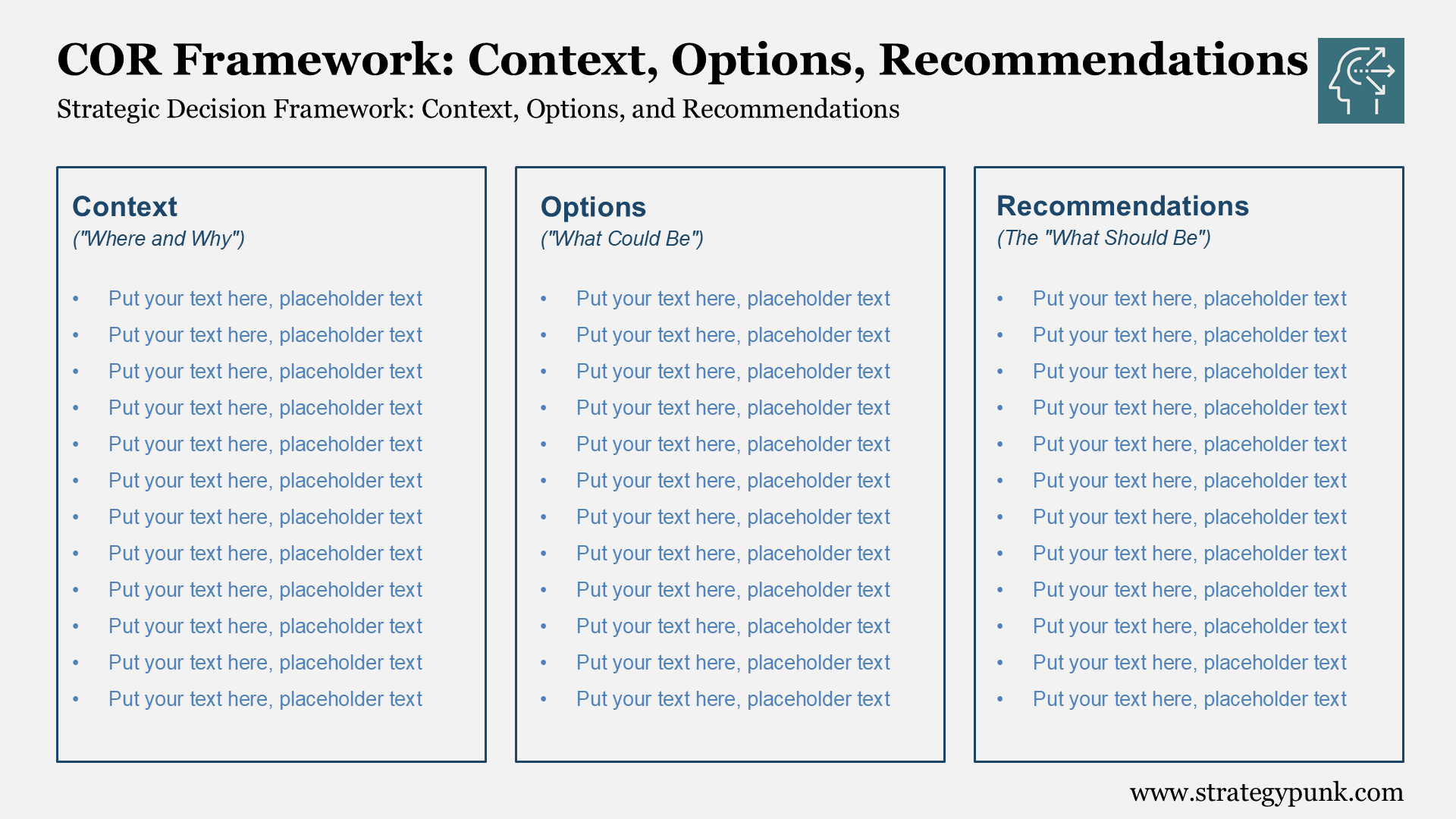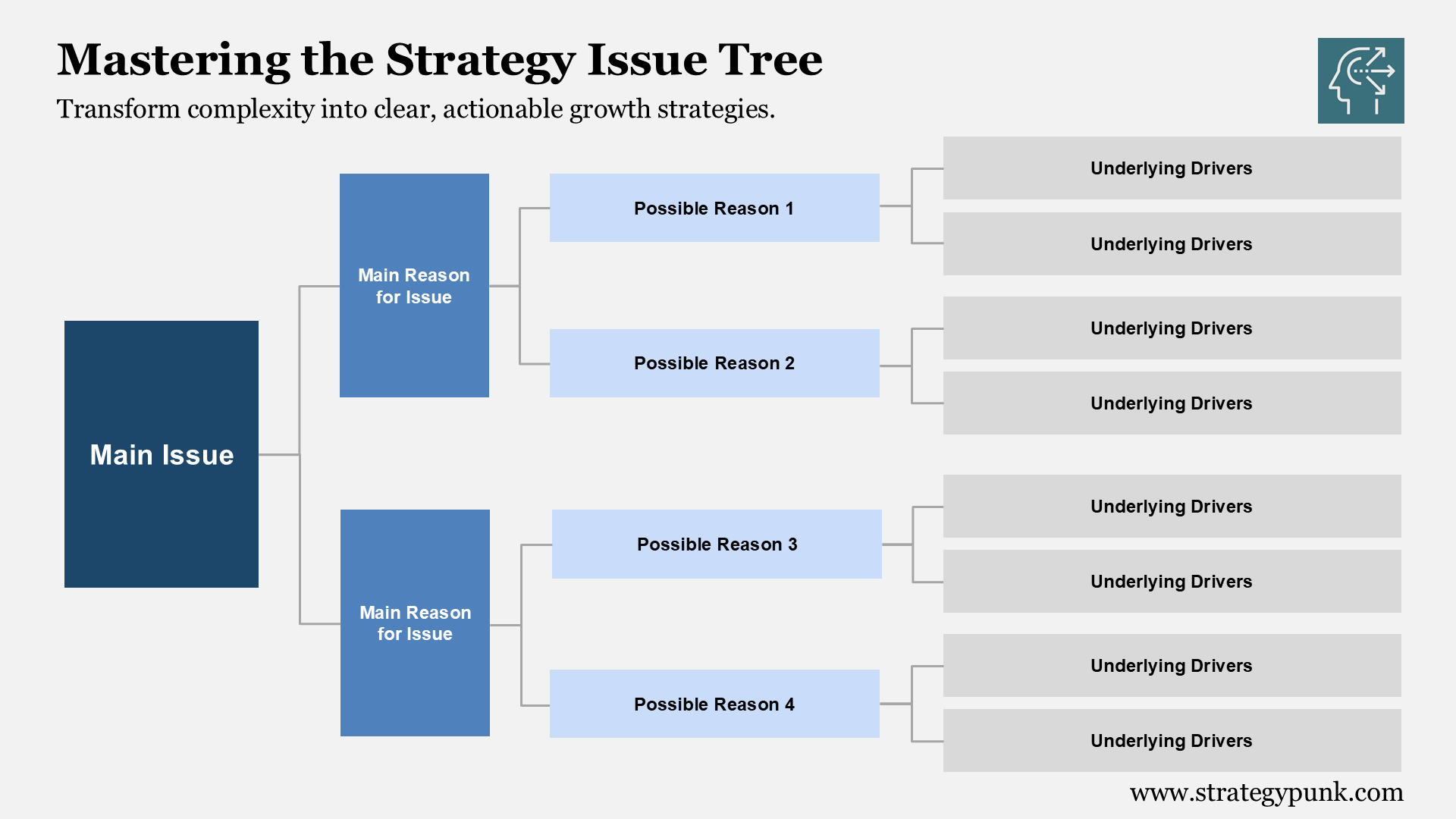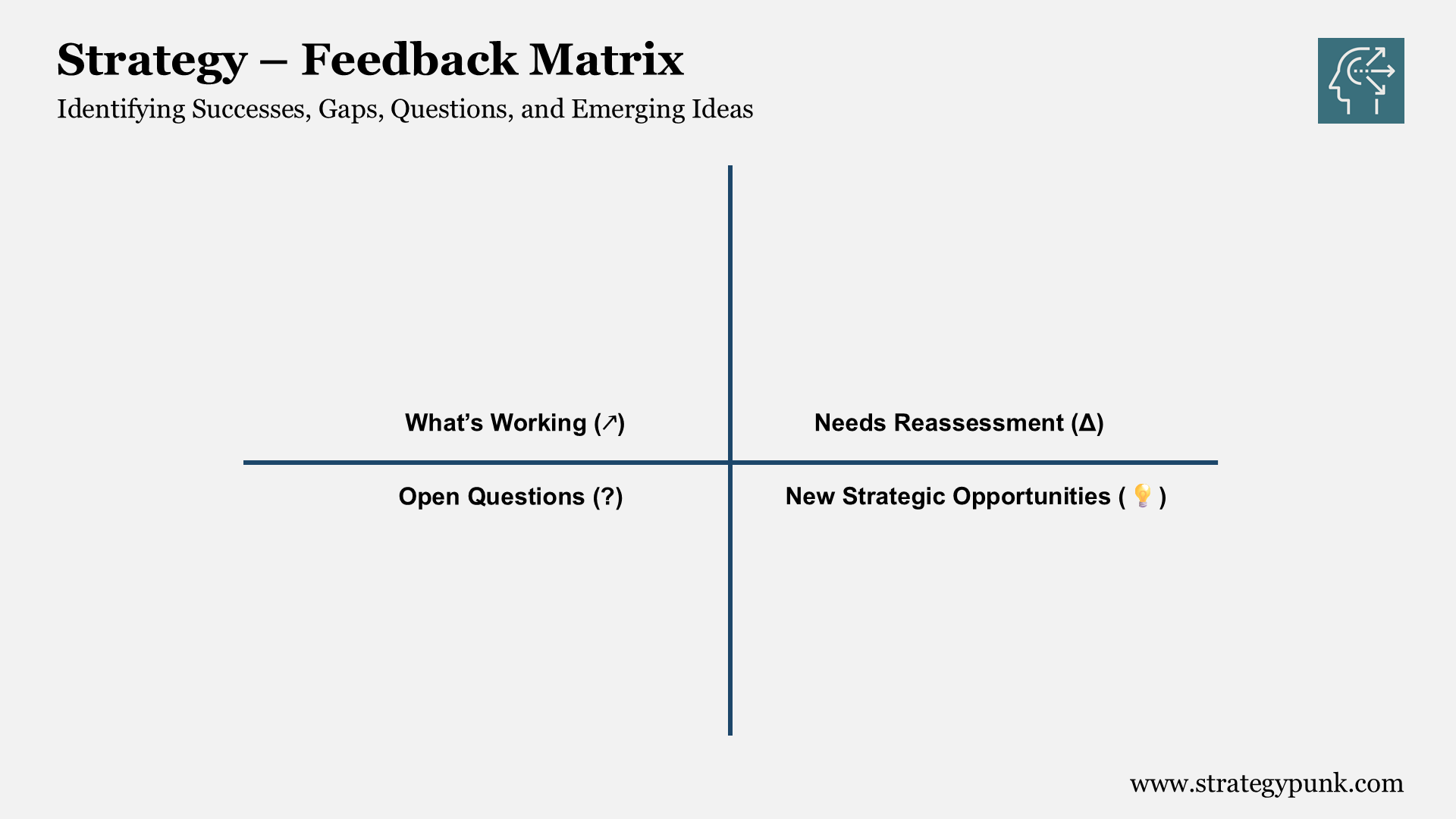New! SWOT Framework & Free PPT Template - 2024 Edition
Dive into the 2024 Edition of our SWOT Analysis guide, complete with a free PowerPoint template. This resource covers the essentials of conducting SWOT analysis, its benefits, and practical application tips, including a case study on Mercedes Benz.

Introduction
Embark on a journey through strategic planning with the SWOT analysis, a pivotal technique for assessing the strengths, weaknesses, opportunities, and threats in your business or project endeavors. This straightforward and impactful tool offers a lens to view your venture's current status and craft a roadmap towards your goals.
This article delves deep into the SWOT analysis framework, offering insights on conducting a fruitful analysis.
We're also excited to present a complimentary, customizable PowerPoint template for 2024 to help you showcase your SWOT findings effectively.
Exploring the SWOT Analysis
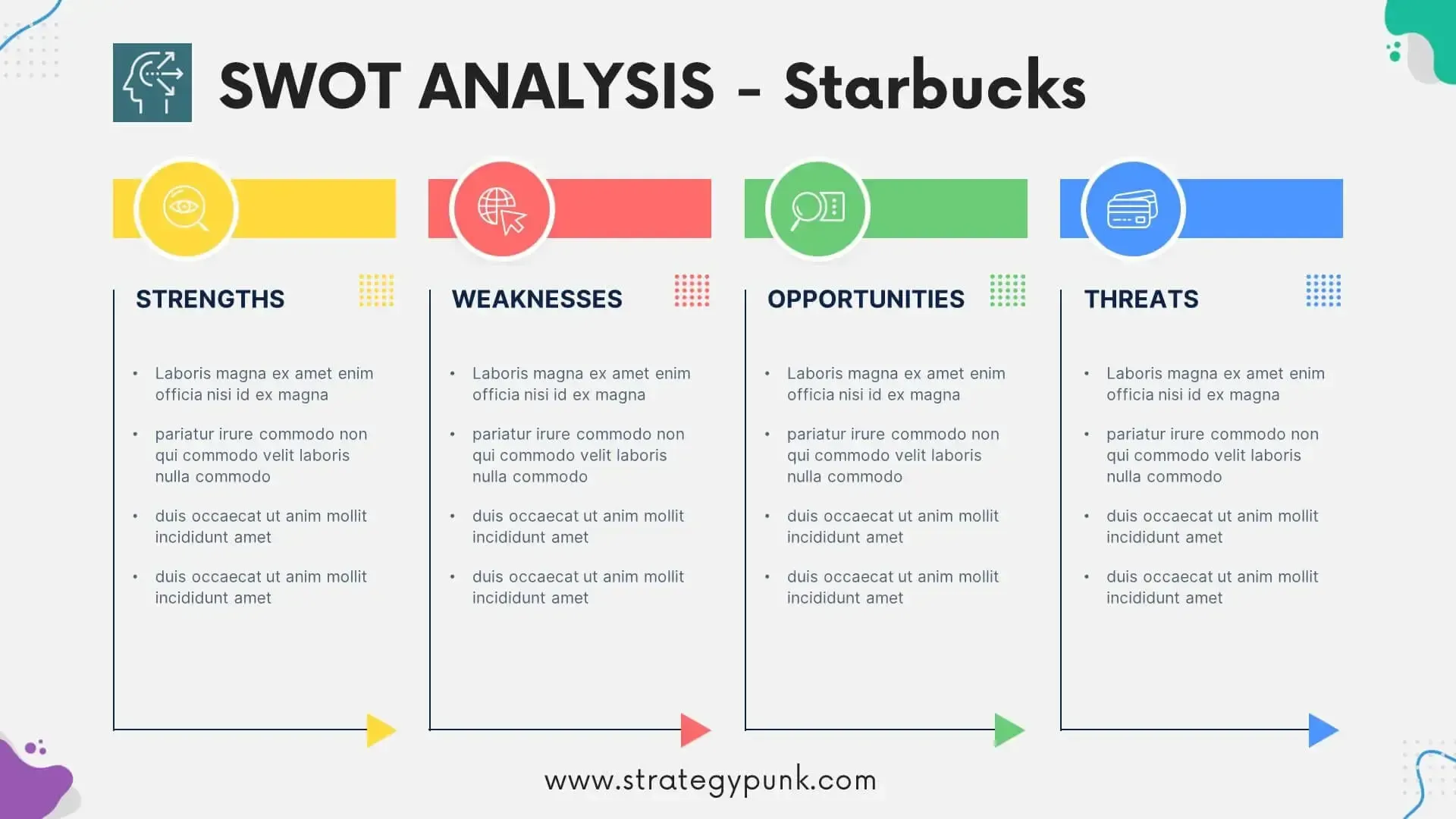
SWOT: An acronym for Strengths, Weaknesses, Opportunities, and Threats, this analysis method evaluates these four critical aspects of any business or project.
- Strengths: These are your internal assets and resources that bolster your chances of success.
- Weaknesses: Internal factors that might hinder your success.
- Opportunities: There are external elements your project can use for its benefit.
- Threats: External challenges that could impact your project's success.
By conducting a SWOT analysis, you can pinpoint your business or project's advantageous and challenging aspects. This enables you to leverage your strengths, address weaknesses, seize opportunities, and counteract threats.
The Advantages of Performing a SWOT Analysis
Engaging in a SWOT analysis brings multiple benefits:
- Insightful Discoveries: It distills crucial insights about your internal capabilities and the external environment, guiding strategic planning.
- Identifying Core Competencies: It aids in recognizing your unique strengths and competitive edges.
- Opportunity Assessment: SWOT helps scan for external opportunities that can be harnessed effectively.
- Threat Identification: It enables proactive strategies to tackle potential external risks.
- Addressing Challenges: Weaknesses and threats become focal points for improvement.
- Strategic Formulation: It provides essential inputs for crafting a strategy that aligns with internal and external factors.
In essence, SWOT analysis is a foundational process that paves the way for actionable strategy development.
How to Conduct a SWOT Analysis
Follow these steps for a comprehensive SWOT analysis:
- Gather Diverse Inputs: Involve various stakeholders to gain a broad perspective and understand their views on the project's strengths, weaknesses, opportunities, and threats.
- Brainstorming Session: Conduct a brainstorming session to list all possible factors under each SWOT category.
- Refine Your List: From your brainstormed list, select the 5-10 most critical factors for focused analysis.
- Analyze Interconnections: Examine how different SWOT elements interact, such as how strength can be used to exploit an opportunity.
- Prioritize Key Elements: Identify the most significant 2-3 factors in each category that will be central to your strategic planning.
- Develop Strategic Actions: Based on your prioritized SWOT analysis, you can make strategies that maximize strengths, address weaknesses, capitalize on opportunities, and mitigate threats.
SWOT Analysis Case Study: Mercedes Benz
Here is an updated SWOT analysis example for Mercedes Benz:

Strengths
- Strong brand image and reputation for luxury and quality
- High customer loyalty and brand value
- Technological innovations in design, performance, safety
- Diverse product portfolio including sedans, SUVs, trucks
Weaknesses
- Higher pricing compared to competitors
- Perception as not environmentally friendly
- High maintenance and service costs
- Limited presence in developing markets
Opportunities
- Growing demand for luxury vehicles in emerging markets like China and India
- Investing in electric and autonomous vehicle technologies
- New mobility solutions and digital services
Threats
- Increasing competition in the luxury car segment
- Tighter emissions regulations globally
- Trade conflicts and macroeconomic uncertainty
- Image damage from quality issues or scandals
The updated example cites relevant search results to highlight Mercedes Benz's key strengths, such as brand equity; weaknesses, such as high costs and opportunities in emerging markets; and threats, such as competition.
Is SWOT analysis still used today?
SWOT analysis is still commonly used today as a strategic planning tool, with around 50% of survey respondents conducting one in the past two months. Many practitioners find it helpful in gaining a holistic understanding of internal and external factors impacting an organization. 2
Some criticisms of SWOT analysis are that it can be one-dimensional, focuses too much on internal factors, and does not lead directly to action. Alternatives like PESTLE, Five Forces, and hypothesis testing have been suggested. 3
Tips for a practical SWOT analysis include getting diverse input, focusing on key factors, being specific and objective, prioritizing the most critical information, and linking results to strategic goals and plans. It should be an ongoing process, not a one-time event. 3
FAQ
Here are answers to some frequently asked questions about SWOT analysis:
Would you happen to have any tips for a practical SWOT analysis?
- Involve a diverse set of stakeholders in the brainstorming process
- Limit your analysis to the most critical 4-5 factors within each SWOT category
- Continually analyze relationships between factors
- Prioritize analysis based on importance and impact
- Use the analysis to inform your strategic plans directly
a SWOT analysis?
- When starting a new project or business venture
- When developing a new product, service, or initiative
- When creating a strategic plan
- When an organization or project is not meeting objectives
- When there are shifts in the competitive landscape
What are the limitations of a SWOT analysis?
- Outcomes depend heavily on the input provided
- Analysis is based on current internal and external conditions, which are constantly evolving
- There can be overlap between factors across different SWOT categories
- It does not account for the probability of factors occurring
- There is a lack of quantitative data in the analysis
Can individuals use SWOT analysis?
Yes, SWOT can be adapted for personal use to evaluate your strengths, weaknesses, opportunities, and threats related to your career or personal life. This helps you recognize areas for self-improvement and potential directions for growth.
Do you think you should take action on all SWOT factors?
No, it’s recommended that you prioritize the 2-4 most essential factors in each SWOT category for action. Trying to address every single factor is not realistic or feasible. Focus on the vital few over the trivial many.
How does a SWOT analysis help with strategic planning?
A SWOT analysis is a valuable strategic planning tool that helps organizations identify their internal strengths and weaknesses and external opportunities and threats. Conducting a SWOT analysis can help businesses determine what they do well, where they can improve, and where they have a strategic advantage or disadvantage against competitors. The SWOT framework assists with strategic planning by informing goal-setting, identifying risks, and guiding decision-making.
What should be included in each section of a SWOT analysis?
The strengths and weaknesses sections should include internal factors such as resources, assets, processes, systems, technologies, skills, and capabilities. The opportunities and threats sections should focus on external factors like industry trends, competitor actions, regulations, economic conditions, and technological or marketplace changes.
Who should be involved in conducting a SWOT analysis?
Ideally, a diverse group of stakeholders should be involved, including leadership, employees from different departments, and external partners or advisors. This enables different perspectives to be considered and a more thorough analysis.
When is the best time to conduct a SWOT analysis?
A SWOT analysis can be done periodically, but it is beneficial when considering a significant decision, like expanding into a new market or launching a new product. It is a crucial step during strategic planning but can also provide value when pivoting or making mid-plan adjustments.
What are some tips for presenting SWOT analysis results effectively?
Focus on critical factors, use a simple 2x2 matrix, summarize points in bullet form, visualize data with charts or graphs, highlight the most vital information, and indicate how the analysis should inform strategic goals and plans.
How can SWOT analysis results be used to improve business strategy?
The results can identify areas to focus resources on, guide plans to leverage strengths, outline how to minimize weaknesses, spotlight opportunities to capitalize on and determine how to counteract external threats facing the business.
We hope these SWOT analysis tips and the free PowerPoint template help you conduct and present a strategic analysis of your project or business!
Free PowerPoint Template for SWOT Analysis
To help you present your own SWOT analysis findings, we are providing a free, editable PowerPoint template.
Here's a preview: SWOT Analysis 2024 PowerPoint Template
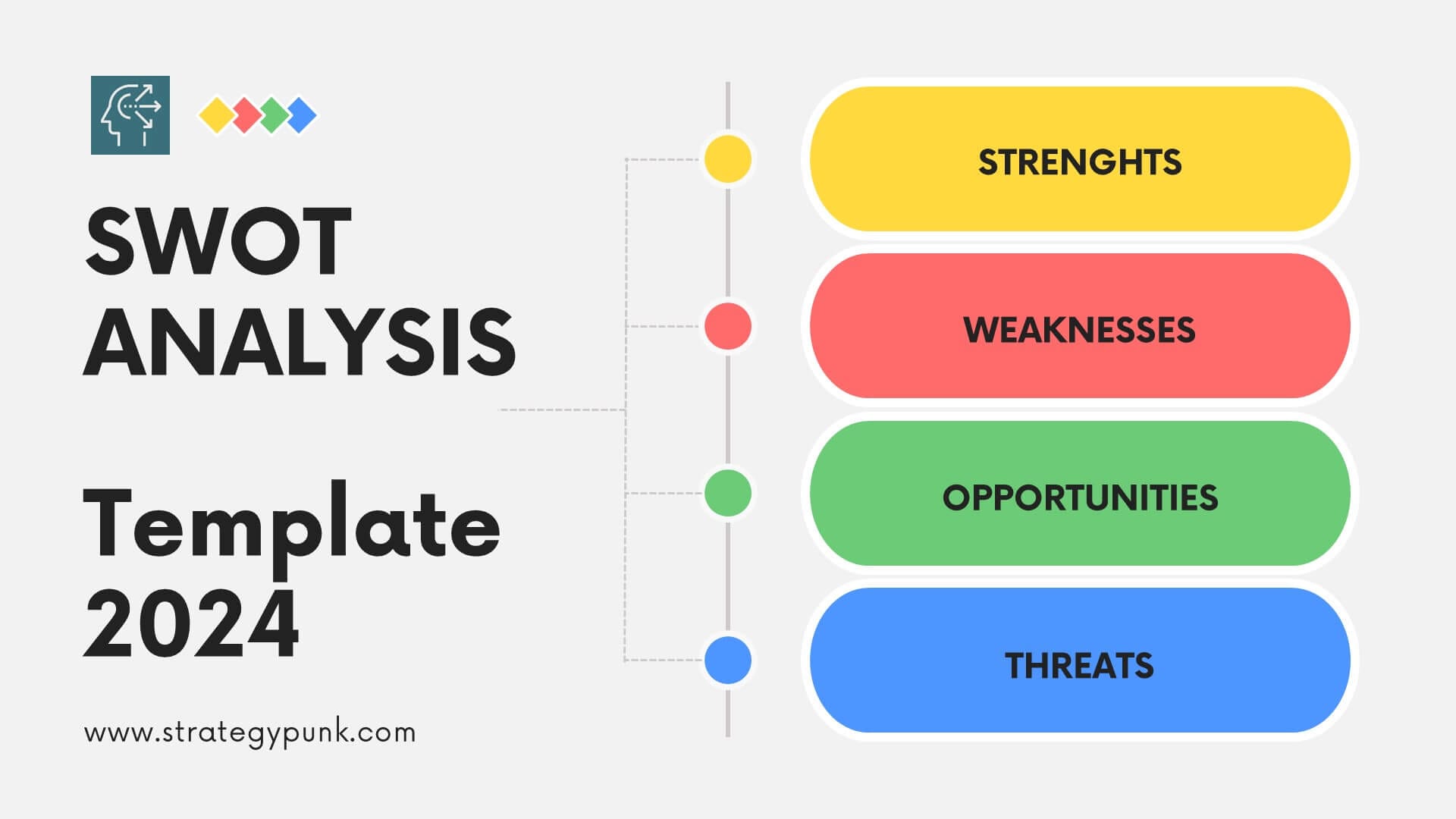

SWOT Analysis PowerPoint Template 2024
This template provides sample content demonstrating how to communicate a SWOT analysis.
It contains slides with analysis overviews, comparison charts, prioritized lists of factors, and strategy recommendations.
The template comes with editable shapes, icons, color schemes, and fonts you can modify to fit your specific analysis. Could you change the sample text to your content? This template provides a professional, visually appealing tool to communicate your SWOT analysis findings!
Log in to download the free SWOT analysis PowerPoint template 2024!


